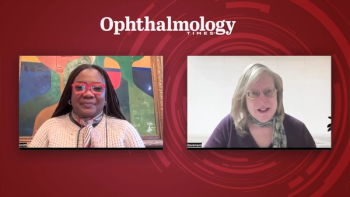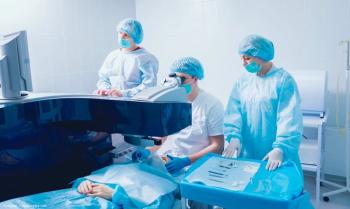
Scleral implants enable rapid near, intermediate visual gain
Patients receiving scleral implants are achieving significant rapid improvements in near and intermediate visual acuity, with most patients achieving J3 binocular vision 18 months after surgery.
Take-Home
Patients receiving scleral implants are achieving significant rapid improvements in near and intermediate visual acuity, with most patients achieving J3 binocular vision 18 months after surgery.
Dr. Stonecipher
By Lynda Charters; Reviewed by Karl G. Stonecipher, MD
Greensboro, NC-Patients undergoing implantation of a scleral implant (PresVIEW Scleral Implant, Refocus Group) are achieving significant improvements in near and intermediate visual acuity, with most patients achieving J3 binocular vision 18 months after surgery.
Key findings from an FDA multicenter IDE clinical trial are that the accommodative effect of the technology increases over time. In addition, the higher the degree of presbyopia, the greater the effect of the scleral implant procedure.
The procedure, according to Karl G. Stonecipher, MD, includes creation of a lamellar scleral tunnel and insertion of the scleral implant 4 mm posterior to the limbus. The procedure is repeated in all four oblique quadrants.
Finally, the conjunctival peritomy is closed 360º with suturing. Current techniques outside the United States, however, include gluing of the peritomy.
“Key advantages of the [procedure] are that it is extraocular and outside the visual axis,” said Dr. Stonecipher, clinical associate professor of ophthalmology, University of North Carolina and medical director for TLC, Greensboro, and Laser Defined Vision. “The procedure is performed bilaterally, so that the patient has binocular continuous vision and not monovision. In addition, the implants are removal.”
Results from FDA study arm
Twenty-six patients (58% men; mean age, 54 years; range, 50 to 60 years) participated in Dr. Stonecipher’s arm of the FDA study. Inclusion criteria were best-corrected distance visual acuity of 20/20 or better and distance corrected near visual acuity of 20/63 to 20/100. The mean manifest spherical equivalent was +0.17 D (range, 0.5 to +0.75 D). All patients had less than 1 D or less of astigmatism. Seventy-eight percent of patients had hyperopia, 12% myopia, and 10% emmetropia.
All patients completed a survey at baseline and at 3, 12, 24 months postoperatively to assess the uncorrected near and intermediate visual function.
Most patients achieved J3 (20/40) or better, Dr. Stonecipher noted. Regarding monocular and binocular vision, by 18 months postoperatively, 84% and 96%, respectively, achieved J3 or better.
Visual gain over time
By 18 months postoperatively, patients achieved a mean of 2.4 lines of visual improvement. Interestingly, the near improvements began by 1 month postoperatively, when the mean improvement was 2 lines.
The survey results from the 12-month time point indicated 88% of patients reported better or significantly better visual acuity after surgery, while 12% reported no change and none reported worsening of the visual acuity. Ninety-six percent of patients had binocular visual acuity of 20/40 or better distance-corrected near visual acuity.
“The percentage of subjects who reported the ability to read newspapers at an excellent-acceptable level increased from 4% at baseline to 84% at 3 months postoperatively,” Dr. Stonecipher said, emphasizing the rapid improvement in visual acuity.
“The preliminary study results suggested that the [scleral implants] are effective for restoring near and intermediate vision in emmetropic presbyopes,” he said. “The improvement is bilateral and clinically significant by 3 months and has improved as the study has continued forward.”
All patients maintained their binocular distance vision because the procedure is performed outside the visual axis, Dr. Stonecipher concluded.
Karl G. Stonecipher, MD
Dr. Stonecipher is a consultant to the Refocus Group. The PresVIEW Scleral Implant is an investigational device and is not yet approved for sale in the United States.
Newsletter
Don’t miss out—get Ophthalmology Times updates on the latest clinical advancements and expert interviews, straight to your inbox.













































